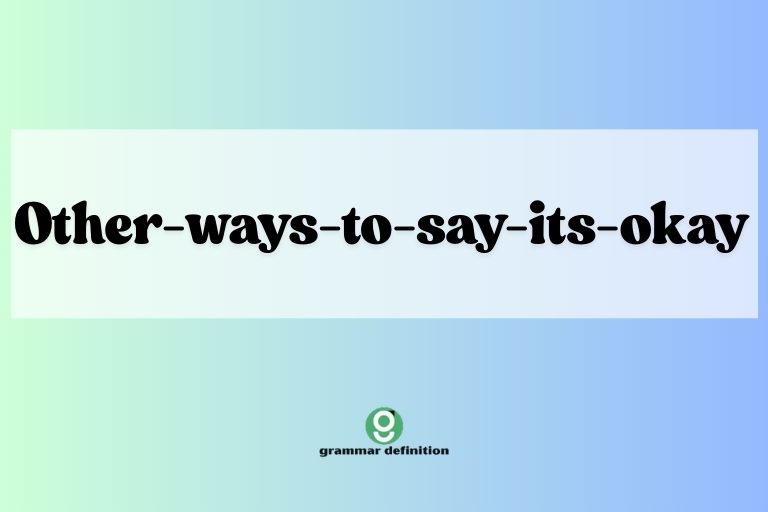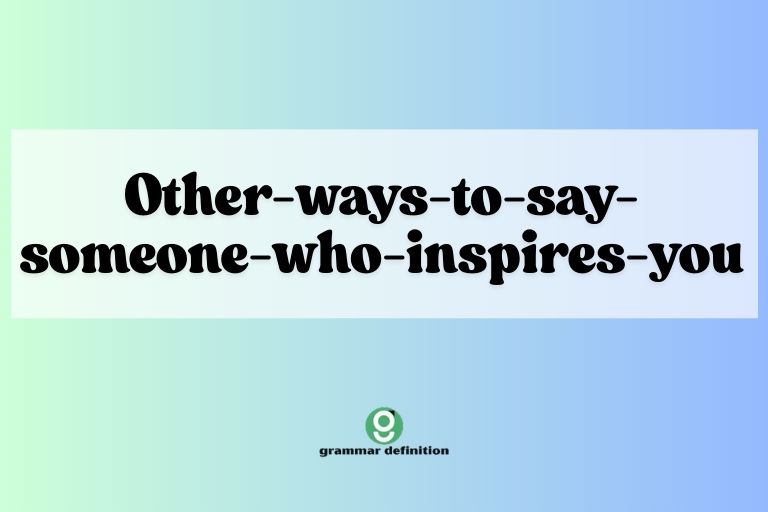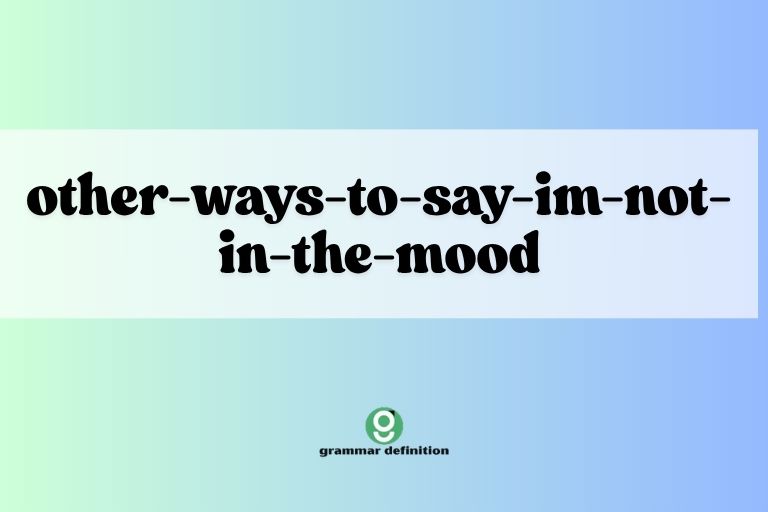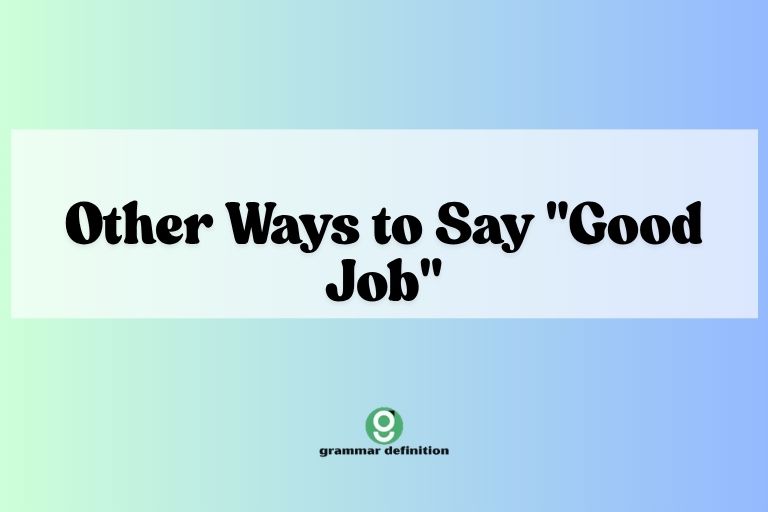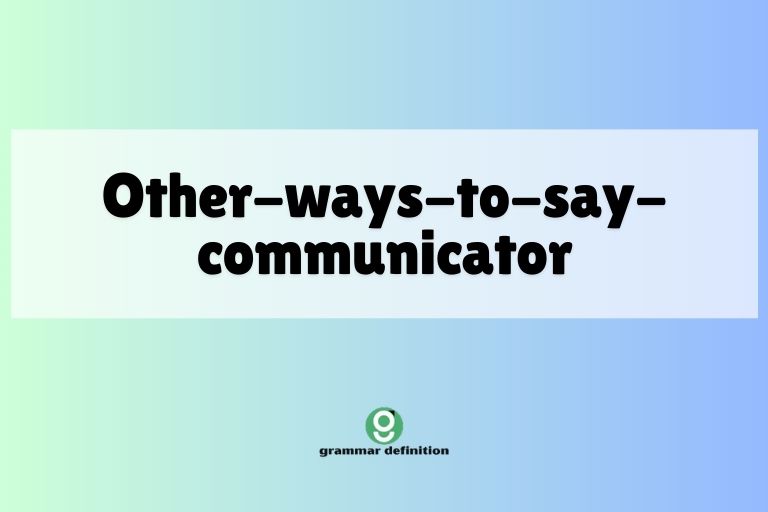Beyond “Contact Us”: Diverse Ways to Initiate Communication
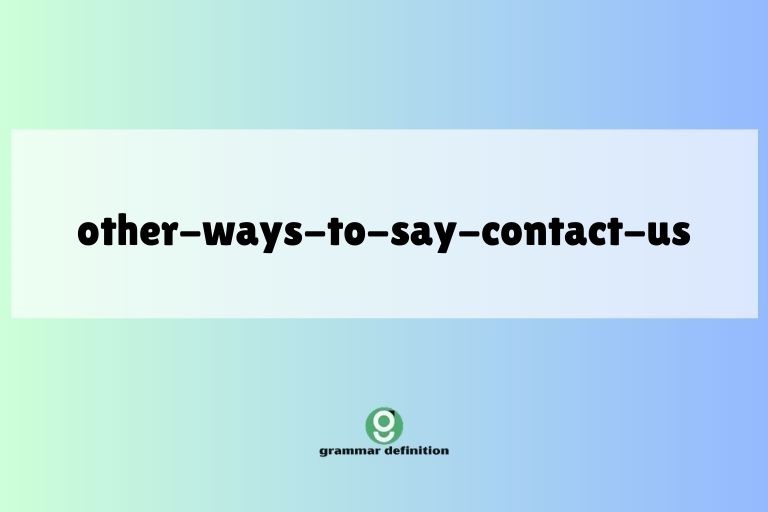
In the realm of effective communication, particularly in professional settings, relying solely on the phrase “contact us” can feel limiting. The English language offers a rich tapestry of alternatives that convey nuance, purpose, and a more personalized approach.
Mastering these variations not only enhances your writing and speaking skills but also ensures that your message resonates more effectively with your audience, whether you’re crafting a compelling call to action or providing avenues for customer support. This article will explore a wide array of alternative phrases for “contact us,” delving into their specific contexts, usage rules, and practical examples.
By understanding these alternatives, you can elevate your communication style and establish stronger connections with your intended recipients.
This comprehensive guide is designed for English language learners, business professionals, website developers, and anyone seeking to refine their communication skills. We will cover everything from formal to informal options, providing clear explanations and practical exercises to help you confidently incorporate these alternatives into your everyday interactions.
Table of Contents
- Definition: What Does “Contact Us” Really Mean?
- Structural Breakdown: Analyzing the Core Components
- Types and Categories of Alternatives
- Extensive Examples
- Usage Rules: Ensuring Grammatical Accuracy
- Common Mistakes to Avoid
- Practice Exercises
- Advanced Topics: Nuances and Subtleties
- Frequently Asked Questions
- Conclusion
Definition: What Does “Contact Us” Really Mean?
The phrase “contact us” is a ubiquitous call to action, typically found on websites, brochures, and other communication materials. At its core, it’s an invitation for individuals to reach out to an organization, business, or individual for various purposes.
These purposes might include seeking information, requesting assistance, providing feedback, or initiating a business relationship. The function of “contact us” is primarily to facilitate communication and engagement between the entity presenting the phrase and its audience.
In a broader context, “contact us” serves as a gateway, allowing potential customers, clients, or interested parties to connect with the organization. It signifies openness, accessibility, and a willingness to engage in dialogue.
The phrase is generally considered neutral in tone and universally understood, making it a safe and reliable option for a wide range of audiences. However, its simplicity can sometimes lack the specificity and personality needed to create a strong connection with the target audience.
Therefore, understanding the nuances of alternative phrases is crucial for effective communication.
Structural Breakdown: Analyzing the Core Components
The phrase “contact us” is structurally straightforward, consisting of two key components: a verb (“contact”) and a pronoun (“us”). The verb “contact” denotes the action of establishing communication with someone.
It implies reaching out through various means, such as phone, email, or physical mail. The pronoun “us” refers to the organization or entity that is inviting the communication.
It represents the collective identity of the individuals or department that will receive and respond to the inquiries.
The simplicity of this structure allows for easy modification and substitution. The verb “contact” can be replaced with synonyms such as “reach,” “connect,” “get in touch,” or “enquire.” The pronoun “us” can be further specified to indicate a particular department or individual, such as “contact support,” “reach the marketing team,” or “email John Doe.” By understanding these structural elements, you can effectively tailor the phrase to suit your specific needs and target audience.
The key is to maintain clarity and ensure that the alternative phrase accurately reflects the desired action and recipient.
Types and Categories of Alternatives
The alternatives to “contact us” can be broadly categorized based on their tone, purpose, and context. Understanding these categories will help you choose the most appropriate phrase for your specific needs.
Formal Alternatives
Formal alternatives are suitable for professional settings, official correspondence, and when addressing a senior audience. These phrases maintain a respectful and courteous tone.
Informal Alternatives
Informal alternatives are appropriate for casual settings, social media, and when addressing a younger or more familiar audience. These phrases are often more conversational and friendly.
Action-Oriented Alternatives
Action-oriented alternatives emphasize the specific action you want the audience to take, such as requesting a quote, scheduling a consultation, or downloading a resource. These phrases are often used in marketing and sales contexts.
Support-Focused Alternatives
Support-focused alternatives are used to guide users towards customer service channels. These phrases emphasize assistance and problem-solving.
Location-Specific Alternatives
Location-specific alternatives provide information on how to contact a particular office, department, or individual. These phrases are useful for large organizations with multiple points of contact.
Extensive Examples
To illustrate the various alternatives to “contact us,” we have compiled a comprehensive list of examples categorized by the types discussed above. Each table provides a range of options, along with notes on their appropriate usage and context.
Formal Examples
The following table provides formal alternatives to “contact us,” suitable for professional and official communications. These phrases emphasize respect and clarity.
| Alternative Phrase | Example Sentence | Context/Usage Notes |
|---|---|---|
| Kindly direct your inquiries to… | Kindly direct your inquiries to the Human Resources department. | Suitable for formal requests and official communications. |
| Please do not hesitate to contact… | Please do not hesitate to contact our customer service team for assistance. | Expresses willingness to assist and encourages communication. |
| For further information, please contact… | For further information, please contact the project manager. | Directs the reader to a specific source for detailed information. |
| We invite you to contact us… | We invite you to contact us at your earliest convenience. | A polite and formal invitation for communication. |
| Should you require assistance, please contact… | Should you require assistance, please contact our technical support team. | Offers help and provides a specific point of contact. |
| We welcome your inquiries at… | We welcome your inquiries at info@example.com. | Encourages questions and provides the contact information. |
| Please address your correspondence to… | Please address your correspondence to the attention of the CEO. | Used for formal written communication. |
| You may contact us via… | You may contact us via email or telephone. | Provides options for contacting the organization. |
| For official matters, please contact… | For official matters, please contact the legal department. | Specifies the appropriate contact for formal issues. |
| We are available to be contacted at… | We are available to be contacted at the following address. | Indicates availability and provides the contact details. |
| To make an official inquiry, please contact… | To make an official inquiry, please contact the registrar’s office. | Directs users for formal inquiries. |
| For any formal communication, please reach out to… | For any formal communication, please reach out to our main office. | Suitable for business letters and official notices. |
| Your questions are welcome; contact us at… | Your questions are welcome; contact us at the provided email address. | A polite way to encourage inquiries. |
| For more details, you are welcome to contact… | For more details, you are welcome to contact our research team. | Indicates willingness to provide further information. |
| We encourage you to reach us for any queries at… | We encourage you to reach us for any queries at the support email. | An open invitation for questions. |
| Feel free to formally reach out to us at… | Feel free to formally reach out to us at your convenience. | Emphasizes the formal nature of contact. |
| For any formal issues, kindly reach out to… | For any formal issues, kindly reach out to our compliance officer. | Directs users to specific contacts for specific needs. |
| To initiate a formal discussion, please contact… | To initiate a formal discussion, please contact our head of department. | Used when a formal meeting or discussion is required. |
| Reach out through formal channels by contacting… | Reach out through formal channels by contacting our HR department. | Specifies that contact should be formal. |
| For formal communication, direct your message to… | For formal communication, direct your message to the secretary. | Offers clear direction for formal messages. |
Informal Examples
The table below showcases informal alternatives to “contact us,” suitable for social media, casual emails, and interactions with a familiar audience. These phrases are friendly and approachable.
| Alternative Phrase | Example Sentence | Context/Usage Notes |
|---|---|---|
| Hit us up! | Hit us up if you have any questions! | Slang, very informal, use with caution. |
| Holler at us! | Holler at us if you need anything! | Slang, informal, use with younger audiences. |
| Get in touch! | Get in touch and let us know what you think! | Friendly and casual. |
| Reach out! | Reach out anytime you need help! | Common and approachable. |
| Drop us a line! | Drop us a line and tell us about your experience! | Classic and friendly. |
| Ping us! | Ping us if you have any issues! | Informal, often used in tech contexts. |
| Give us a shout! | Give us a shout if you’re interested! | Friendly and casual. |
| Buzz us! | Buzz us with your ideas! | Informal and energetic. |
| Say hi! | Say hi and introduce yourself! | Simple and welcoming. |
| Connect with us! | Connect with us on social media! | Invites interaction on social platforms. |
| Let us know! | Let us know what you think! | Simple and direct. |
| Tell us! | Tell us your story! | Encourages sharing. |
| Chat with us! | Chat with us live on our website! | Invites live conversation. |
| Talk to us! | Talk to us about your needs! | Encourages dialogue. |
| Write to us! | Write to us with your comments! | Classic and simple. |
| Email us! | Email us for support! | Direct and specific. |
| Message us! | Message us on Facebook! | Specific to messaging platforms. |
| Tweet us! | Tweet us your feedback! | Specific to Twitter. |
| DM us! | DM us on Instagram! | Specific to Instagram. |
| Find us! | Find us on LinkedIn! | Directs to a specific platform. |
Action-Oriented Examples
The following table presents action-oriented alternatives to “contact us,” designed to prompt specific actions from the audience. These are commonly used in marketing, sales, and promotional materials.
| Alternative Phrase | Example Sentence | Context/Usage Notes |
|---|---|---|
| Request a quote! | Request a quote today for our services! | Directly prompts a request for pricing. |
| Schedule a consultation! | Schedule a consultation with our experts! | Encourages booking a meeting. |
| Book an appointment! | Book an appointment online! | Prompts scheduling a specific time. |
| Get a free estimate! | Get a free estimate for your project! | Offers a no-cost evaluation. |
| Learn more! | Learn more about our products! | Encourages further exploration. |
| Download our brochure! | Download our brochure for detailed information! | Prompts downloading a resource. |
| Sign up for our newsletter! | Sign up for our newsletter to stay updated! | Encourages subscription. |
| Register now! | Register now for the upcoming webinar! | Prompts immediate registration. |
| Get started! | Get started with our free trial! | Encourages initiation. |
| Apply today! | Apply today for the scholarship! | Prompts immediate application. |
| Subscribe now! | Subscribe now to our premium services! | Encourages long-term engagement. |
| Explore our services! | Explore our services and find the perfect fit! | Invites browsing. |
| Browse our catalog! | Browse our catalog for our latest products! | Prompts catalog viewing. |
| Discover more! | Discover more about our mission! | Encourages deeper understanding. |
| See how it works! | See how it works with our demo! | Prompts viewing a demonstration. |
| Start your journey! | Start your journey with us today! | Encourages initiation. |
| Claim your offer! | Claim your offer before it expires! | Prompts immediate action. |
| Get in touch for a demo! | Get in touch for a personal demo! | Encourages demo requests. |
| Request information! | Request information about our programs! | Prompts information requests. |
| Check availability! | Check availability for our courses! | Encourages checking for open slots. |
Support-Focused Examples
The table below provides support-focused alternatives to “contact us,” designed to guide users towards customer service and technical assistance. These phrases emphasize help and problem-solving.
| Alternative Phrase | Example Sentence | Context/Usage Notes |
|---|---|---|
| Get help! | Get help with our online resources! | Simple and direct. |
| Visit our support center! | Visit our support center for FAQs and tutorials! | Directs to a central support hub. |
| Contact support! | Contact support for technical assistance! | Specific to technical issues. |
| Reach our customer service! | Reach our customer service for immediate assistance! | Emphasizes customer care. |
| Talk to an expert! | Talk to an expert for personalized advice! | Highlights expertise. |
| Chat with us online! | Chat with us online for quick answers! | Promotes live chat. |
| Find answers! | Find answers to your questions in our FAQ! | Directs to FAQ section. |
| Submit a ticket! | Submit a ticket for detailed support! | Prompts creating a support request. |
| Troubleshoot now! | Troubleshoot now with our online tool! | Encourages self-service. |
| Report an issue! | Report an issue with our software! | Prompts reporting problems. |
| Ask a question! | Ask a question in our forum! | Encourages community interaction. |
| Get assistance! | Get assistance with your account! | General offer of help. |
| We’re here to help! | We’re here to help with any issues you may have! | Emphasizes helpfulness. |
| How can we help you? | How can we help you today? | Open-ended offer of assistance. |
| Need help? | Need help? Contact us now! | Simple and direct question. |
| Find solutions! | Find solutions to common problems here! | Directs to problem-solving resources. |
| Support is available! | Support is available 24/7! | Highlights availability. |
| Get technical support! | Get technical support for hardware issues! | Specific to technical problems. |
| We’re at your service! | We’re at your service to address your concerns! | Emphasizes dedication to service. |
| Find immediate support! | Find immediate support in our live chat! | Highlights quick assistance. |
Location-Specific Examples
The following table provides location-specific alternatives to “contact us,” useful for organizations with multiple branches, departments, or individuals. These phrases provide clarity and direct users to the appropriate point of contact.
| Alternative Phrase | Example Sentence | Context/Usage Notes |
|---|---|---|
| Contact our New York office! | Contact our New York office for regional inquiries! | Specifies a particular branch. |
| Reach the Marketing Department! | Reach the Marketing Department for promotional information! | Directs to a specific team. |
| Email John Doe directly! | Email John Doe directly for project updates! | Provides a specific individual’s contact. |
| Contact the London branch! | Contact the London branch for European inquiries! | Specifies a geographic location. |
| Reach the Sales Team directly! | Reach the Sales Team directly for product orders! | Connects to sales professionals. |
| Contact the head office! | Contact the head office for general inquiries! | Directs to the main administrative center. |
| Speak to a local representative! | Speak to a local representative in your area! | Connects to regional agents. |
| Contact the nearest branch! | Contact the nearest branch for personalized service! | Encourages local interaction. |
| For international inquiries, contact… | For international inquiries, contact our global support team! | Filters inquiries by region. |
| Get in touch with the regional manager! | Get in touch with the regional manager for local issues! | Connects to local management. |
| Contact our customer support team! | Contact our customer support team for assistance with orders! | Specifies a team for customer-related issues. |
| Reach out to our technical assistance team! | Reach out to our technical assistance team for software issues! | Directs users to technical experts. |
| For HR-related questions, contact… | For HR-related questions, contact our Human Resources department! | Specifies a department for HR matters. |
| Contact our PR department! | Contact our PR department for media inquiries! | Directs media professionals to the right team. |
| Get in touch with our legal team! | Get in touch with our legal team for contract issues! | Connects to legal professionals. |
| Contact our accounting department! | Contact our accounting department for financial matters! | Specifies a department for accounting inquiries. |
| For specific regional needs, contact… | For specific regional needs, contact our branch in Seattle. | Tailors contacts to regional requirements. |
| Speak directly to our CEO by contacting… | Speak directly to our CEO by contacting the executive assistant. | Provides access to top leadership. |
| Contact the department head for project-related issues! | Contact the department head for project-related issues at Extension 200. | Connects to project leads. |
| Reach the marketing team in our European office! | Reach the marketing team in our European office for market-specific data! | Specifies both team and location. |
Usage Rules: Ensuring Grammatical Accuracy
When using alternatives to “contact us,” it’s essential to adhere to standard English grammar rules. Ensure that the verb tense is appropriate for the context.
For example, use the present tense for general instructions (“Contact us for more information”) and the imperative mood for direct calls to action (“Contact us now!”). Pay attention to subject-verb agreement, especially when specifying a particular department or individual.
For instance, “The marketing team is available” (singular collective noun takes a singular verb). Also, ensure correct preposition usage.
For example, “Contact us *at* info@example.com” is correct, while “Contact us *on* info@example.com” is incorrect.
Maintain consistency in tone and style throughout your communication. If you’re using formal language in one section, avoid switching to informal language abruptly.
Be mindful of your audience and choose alternatives that are appropriate for their level of understanding and familiarity with your organization. When in doubt, opt for clearer and more direct language to avoid confusion or misinterpretation.
Always proofread your writing carefully to catch any grammatical errors or typos before publishing or sending your message.
Common Mistakes to Avoid
One common mistake is using overly informal language in professional contexts. For example, “Hit us up!” might be suitable for social media, but it’s inappropriate for a formal business email.
Another mistake is using vague or ambiguous language. Instead of saying “Get in touch,” specify how the audience should contact you (e.g., “Email us at support@example.com”).
Avoid using jargon or technical terms that your audience may not understand. Keep your language clear, concise, and easy to understand.
Another frequent error is incorrect verb tense. For example, saying “Contacted us for help” is grammatically incorrect; it should be “Contact us for help” or “Contact us if you need help.” Pay close attention to the correct use of prepositions with contact information.
Always double-check your contact details for accuracy to avoid frustrating your audience.
Here are some examples of common mistakes and their corrections:
| Incorrect | Correct | Explanation |
|---|---|---|
| Holler us if you need something. | Holler at us if you need something. | “Holler” requires the preposition “at.” |
| Reach us on our website. | Reach us through our website. | “Through” is more appropriate for online contact. |
| Contact we for assistance. | Contact us for assistance. | “Us” is the correct pronoun. |
| Email to us your questions. | Email your questions to us. | Better word order for clarity. |
| Contacting us for help. | Contact us for help. | Correct verb form for general instructions. |
| Ping us if you will have questions. | Ping us if you have questions. | Simpler tense usage is more direct. |
| Contact with support for help. | Contact support for help. | “Contact” does not require “with” in this context. |
| Get in touched with us. | Get in touch with us. | Correct idiom is “get in touch.” |
| DM to us on Instagram. | DM us on Instagram. | “DM” is a transitive verb and doesn’t need “to.” |
| Said hi us. | Say hi to us. | “Say hi” requires “to” before the recipient. |
Practice Exercises
Test your understanding of the alternatives to “contact us” with these practice exercises. Fill in the blanks with the most appropriate phrase from the options provided.
Exercise 1: Formal Alternatives
- For further details, _______________ the project coordinator. (a) hit us up, (b) please contact, (c) ping us
- _______________ if you require any additional information. (a) Holler at us, (b) Please do not hesitate to contact, (c) Buzz us
- _______________ your inquiries to the Human Resources department. (a) Kindly direct, (b) Get in touch, (c) Reach out
- We _______________ at your earliest convenience. (a) Invite you to contact us, (b) Tell us, (c) Chat with us
- _______________ our technical support team if you need help. (a) Should you require assistance, please contact, (b) Drop us a line, (c) Say hi
- We _______________ at our email address. (a) Are available to be contacted, (b) Let us know, (c) Email us
- To make an official inquiry, _______________ the registrar’s office. (a) Buzz, (b) Holler, (c) Please contact
- For any formal communication, _______________ our main office. (a) Please reach out to, (b) Find, (c) Connect
- Your questions are welcome; _______________ at the provided email address. (a) Contact us, (b) DM, (c) Tweet
- For more details, you are welcome to _______________ our research team. (a) Contact, (b) Holler, (c) Ping
Answer Key: 1. b, 2. b, 3. a, 4. a, 5. a, 6. a, 7. c, 8. a, 9. a, 10. a
Exercise 2: Informal Alternatives
- _______________ if you have any questions! (a) Hit us up, (b) Please contact, (c) Kindly direct
- _______________ if you need anything! (a) Holler at us, (b) Please do not hesitate to contact, (c) Should you require assistance
- _______________ and let us know what you think! (a) Get in touch, (b) Kindly direct, (c) We invite you to contact us
- _______________ anytime you need help! (a) Reach out, (b) For further information, please contact, (c) We welcome your inquiries
- _______________ and tell us about your experience! (a) Drop us a line, (b) You may contact us via, (c) Please address your correspondence
- _______________ if you have any issues! (a) Ping us, (b) For official matters, please contact, (c) We are available to be contacted
- _______________ if you’re interested! (a) Give us a shout, (b) To make an official inquiry, please contact, (c) For any formal communication, please reach out
- _______________ with your ideas! (a) Buzz us, (b) Your questions are welcome; contact, (c) For more details, you are welcome to contact
- _______________ and introduce yourself! (a) Say hi, (b) We encourage you to reach us, (c) Feel free to formally reach out
- _______________ on social media! (a) Connect with us, (b) For any formal issues, kindly reach out, (c) To initiate a formal discussion, please contact
Answer Key: 1. a, 2. a, 3. a, 4. a, 5. a, 6. a, 7. a, 8. a, 9. a, 10. a
Exercise 3: Action-Oriented Alternatives
- _______________ today for our services! (a) Request a quote, (b) Get in touch, (c) Holler at us
- _______________ with our experts! (a) Schedule a consultation, (b) Reach out, (c) Ping us
- _______________ online! (a) Book an appointment, (b) Drop us a line, (c) Buzz us
- _______________ for your project! (a) Get a free estimate, (b) Say hi, (c) Connect with us
- _______________ about our products! (a) Learn more, (b) Let us know, (c) Tell us
- _______________ for detailed information! (a) Download our brochure, (b) Chat with us, (c) Talk to us
- _______________ to stay updated! (a) Sign up for our newsletter, (b) Write to us, (c) Email us
- _______________ for the upcoming webinar! (a) Register now, (b) Message us, (c) Tweet us
- _______________ with our free trial! (a) Get started, (b) DM us, (c) Find us
- _______________ for the scholarship! (a) Apply today, (b) Hit us up, (c) Holler at us
Answer Key: 1. a, 2. a, 3. a, 4. a, 5. a, 6. a, 7. a, 8. a, 9. a, 10. a
Exercise 4: Support-Focused Alternatives
- _______________ with our online resources! (a) Get help, (b) Request a quote, (c) Schedule a consultation
- _______________ for FAQs and tutorials! (a) Visit our support center, (b) Book an appointment, (c) Get a free estimate
- _______________ for technical assistance! (a) Contact support, (b) Learn more, (c) Download our brochure
- _______________ for immediate assistance! (a) Reach our customer service, (b) Sign up for our newsletter, (c) Register now
- _______________ for personalized advice! (a) Talk to an expert, (b) Get started, (c) Apply today
- _______________ for quick answers! (a) Chat with us online, (b) Subscribe now, (c) Explore our services
- _______________ to your questions in our FAQ! (a) Find answers, (b) Browse our catalog, (c) Discover more
- _______________ for detailed support! (a) Submit a ticket, (b) See how it works, (c) Start your journey
- _______________ with our online tool! (
a) Troubleshoot now, (b) Claim your offer, (c) Get in touch for a demo
- _______________ with our software! (a) Report an issue, (b) Request information, (c) Check availability
Answer Key: 1. a, 2. a, 3. a, 4. a, 5. a, 6. a, 7. a, 8. a, 9. a, 10. a
Exercise 5: Location-Specific Alternatives
- _______________ for regional inquiries! (a) Contact our New York office, (b) Get help, (c) Request a quote
- _______________ for promotional information! (a) Reach the Marketing Department, (b) Visit our support center, (c) Book an appointment
- _______________ for project updates! (a) Email John Doe directly, (b) Contact support, (c) Get a free estimate
- _______________ for European inquiries! (a) Contact the London branch, (b) Reach our customer service, (c) Learn more
- _______________ for product orders! (a) Reach the Sales Team directly, (b) Talk to an expert, (c) Download our brochure
- _______________ for general inquiries! (a) Contact the head office, (b) Chat with us online, (c) Sign up for our newsletter
- _______________ in your area! (a) Speak to a local representative, (b) Find answers, (c) Register now
- _______________ for personalized service! (a) Contact the nearest branch, (b) Submit a ticket, (c) Get started
- For international inquiries, _______________! (a) Contact our global support team, (b) Troubleshoot now, (c) Apply today
- _______________ for local issues! (a) Get in touch with the regional manager, (b) Report an issue, (c) Subscribe now
Answer Key: 1. a, 2. a, 3. a, 4. a, 5. a, 6. a, 7. a, 8. a, 9. a, 10. a
Advanced Topics: Nuances and Subtleties
Beyond the basic alternatives, there are advanced nuances to consider. Context is paramount; the same phrase can have different implications based on where it’s used.
For example, “Reach out” on a personal blog might feel welcoming, while on a corporate website, it could seem impersonal if not accompanied by specific contact details. Cultural sensitivity also plays a role.
Some phrases may resonate better with certain cultural groups than others. Understanding your target demographic is crucial for effective communication.
Another subtle aspect is the implied level of urgency. Phrases like “Contact us immediately” or “Get in touch ASAP” convey a sense of urgency, which may be appropriate in certain situations but could also create unnecessary pressure.
Consider the psychological impact of your chosen phrase. Does it inspire confidence, create a sense of trust, or encourage engagement?
Experiment with different alternatives and analyze their impact on your audience to fine-tune your communication strategy.
Frequently Asked Questions
-
Is it ever wrong to use “Contact Us”?
-
No, “Contact Us” is a universally understood and neutral phrase. However, it can sometimes lack the specificity and personality needed to create a strong connection with your audience.
Consider using alternatives to add nuance and context.
-
How do I choose the right alternative for my audience?
-
Consider your audience’s demographics, level of familiarity with your organization, and the purpose of the communication. Formal alternatives are best for professional settings, while informal alternatives are suitable for casual interactions.
Action-oriented phrases are effective for marketing and sales contexts.
-
Can I use multiple alternatives on the same page?
-
Yes, using a variety of alternatives can make your communication more engaging and cater to different preferences. However, maintain consistency in tone and style throughout your content.
-
Are there any phrases I should absolutely avoid?
-
Avoid using slang or jargon that your audience may not understand. Be cautious with overly informal language in professional contexts.
Always double-check your contact details for accuracy.
-
How important is context when choosing an alternative?
-
Context is crucial. The same phrase can have different implications based on where it’s used.
Consider the overall tone and style of your communication, as well as the specific purpose of the call to action.
-
Should I always include a phone number and email address?
-
Providing multiple contact options is generally recommended, as it caters to different preferences. However, prioritize the most effective channels for your target audience.
-
How can I make my contact information more accessible?
-
Ensure that your contact information is prominently displayed and easy to find. Use clear and concise language.
Consider adding a contact form for direct inquiries.
-
What if I don’t have a dedicated support team?
-
Even if you don’t have a dedicated support team, you can still provide helpful resources and guidance. Direct users to FAQs, tutorials, or other relevant content.
-
How can I encourage more people to contact us?
-
Make it easy for people to contact you by providing clear and accessible contact information. Use compelling calls to action that emphasize the benefits of reaching out.
-
Is it okay to use humor when asking people to contact us?
-
Humor can be effective in certain contexts, but use it cautiously. Ensure that your humor is appropriate for your audience and that it doesn’t detract from the message.
Conclusion
Mastering the art of alternative phrases for “contact us” is a valuable skill for anyone seeking to enhance their communication effectiveness. By understanding the nuances of formal, informal, action-oriented, support-focused, and location-specific options, you can tailor your message to resonate more deeply with your target audience.
Remember to adhere to grammatical rules, avoid common mistakes, and consider the context and cultural sensitivity of your chosen phrases. With practice and attention to detail, you can confidently elevate your communication style and establish stronger connections with your intended recipients, making every interaction more meaningful and impactful.


